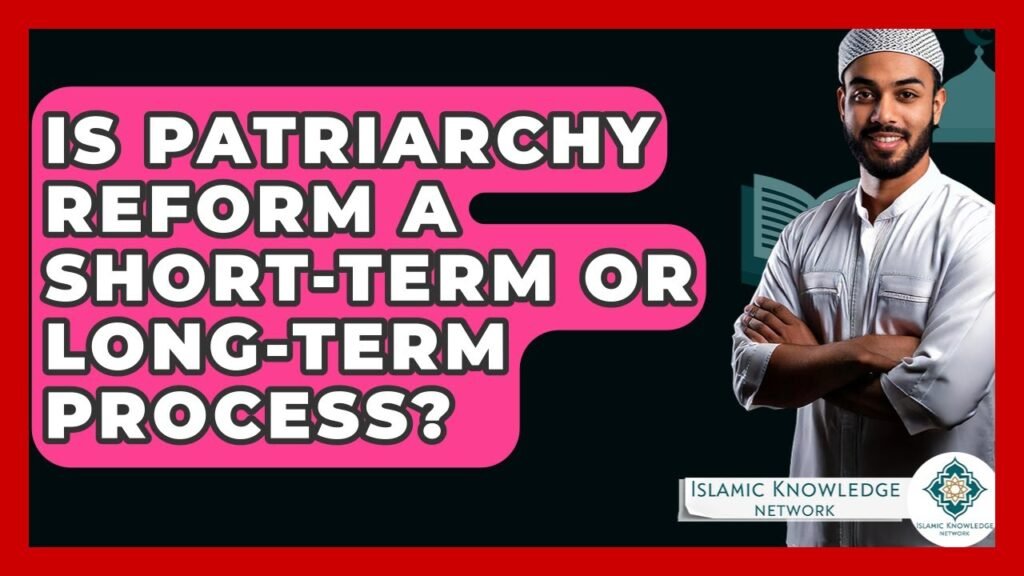You are here to read: Is Patriarchy Reform Short-term or Long-term Process? – A Thoughtfully Written Guide Offering Spiritual Wisdom and Travel Advice for Every Pilgrim who is going on holy journey of Hajj or Umrah.
Introduction
The concept of patriarchy, deeply rooted in various cultures, has sparked considerable debate regarding its reform. In the context of Islamic teachings and societies, understanding whether patriarchy reform is a short-term or long-term process becomes crucial. As we navigate the nuances of this complex issue, it’s essential to recognize the diverse interpretations within the Islamic community and the varying approaches to achieving gender equity. This introspective journey aims to shed light on the pathways available for reform and the impact it could have in fostering a more equitable society.
At the Islamic Knowledge Network, we strive to provide comprehensive insights not only on societal issues like patriarchy but also on religious pilgrimages, offering a wealth of information on Hajj and Umrah. Our blog is dedicated to keeping you updated on all essential aspects of these sacred journeys, from practical tips to profound spiritual insights. By intertwining discussions on social reforms with our rich content on spiritual travels, we hope to cultivate a deeper understanding of how both elements play a role in shaping modern Muslim identity. We invite you to explore this engaging dialogue and discover how changes in societal structures can harmonize with the principles of faith.
Is Patriarchy Reform Short-term or Long-term Process?
Patriarchy reform is primarily a long-term process, requiring deep societal shifts rather than superficial changes. While some initiatives may yield short-term results—such as policy changes or awareness campaigns—the fundamental restructuring of cultural norms and values takes time. Societies steeped in patriarchal traditions resist rapid transformation, necessitating sustained efforts over decades to alter mindsets and behaviors.
In many cases, short-term reforms might lead to backlash or resistance among those resistant to change. For effective patriarchy reform, there must be a commitment to education, advocacy, and policy enforcement over the long haul. Engaging both men and women in the conversation is crucial, fostering an environment where equality is understood and embraced.
Organizations and individuals can leverage platforms, such as airlinkhajjandumrah.com, which frequently updates its readers on Hajj and Umrah. These platforms can also highlight gender equality initiatives within religious contexts, creating dialogues that promote cooperation and understanding. By addressing patriarchal norms in various facets of life, from faith to daily actions, we can pave the way for genuine and lasting change.
In conclusion, while achieving immediate improvements is possible, the overall journey toward dismantling patriarchy demands a long-term, collective effort rooted in education and cultural transformation.
You're at the middle of this awesome post at AirlinkHajjandUmrah.com through: Is Patriarchy Reform Short-term or Long-term Process?. Keep reading, it gets better!
FAQ on Is Patriarchy Reform Short-term or Long-term Process?
FAQs: Is Patriarchy Reform Short-term or Long-term Process?
-
What is patriarchy reform?
Patriarchy reform refers to the efforts and initiatives aimed at challenging and changing the societal norms, structures, and systems that perpetuate male dominance and gender inequality.
-
Is patriarchy reform a quick process?
No, patriarchy reform is generally viewed as a long-term process, as it involves deep-rooted cultural changes, shifts in societal attitudes, and systemic transformations that take time to achieve. -
What factors influence the duration of patriarchy reform?
Factors such as cultural resistance, political will, existing social structures, and the level of community engagement all play a significant role in determining how quickly or slowly reforms can occur. -
Can short-term actions contribute to long-term change?
Yes, short-term actions, such as awareness campaigns and policy changes, can create momentum and pave the way for long-term reforms by initiating conversations and fostering a culture of equality. - What are some examples of successful long-term patriarchy reforms?
Examples include legal changes that grant women equal rights, educational initiatives promoting gender equality, and grassroots movements that mobilize communities to challenge patriarchal norms over extended periods.
That wraps up Is Patriarchy Reform Short-term or Long-term Process?. Thanks for sticking with us till here! Share this: Is Patriarchy Reform Short-term or Long-term Process? with your friends.
Check our homepage at Air Link Hajj & Umrah for more awesome updates.
Some interesting posts are: 1: Umrah Mubarak, 2: When is Umrah closed 2026?, 3: When does Umrah start after Hajj 2026?
Mushu, an experienced Saudi Arabia traveler and writer, shares insightful tips and spiritual reflections to enhance Hajj and Umrah journeys for fellow pilgrims. He has been to Makkah and Madina from 2016 to 2023 many times and his posts will reflect this.







